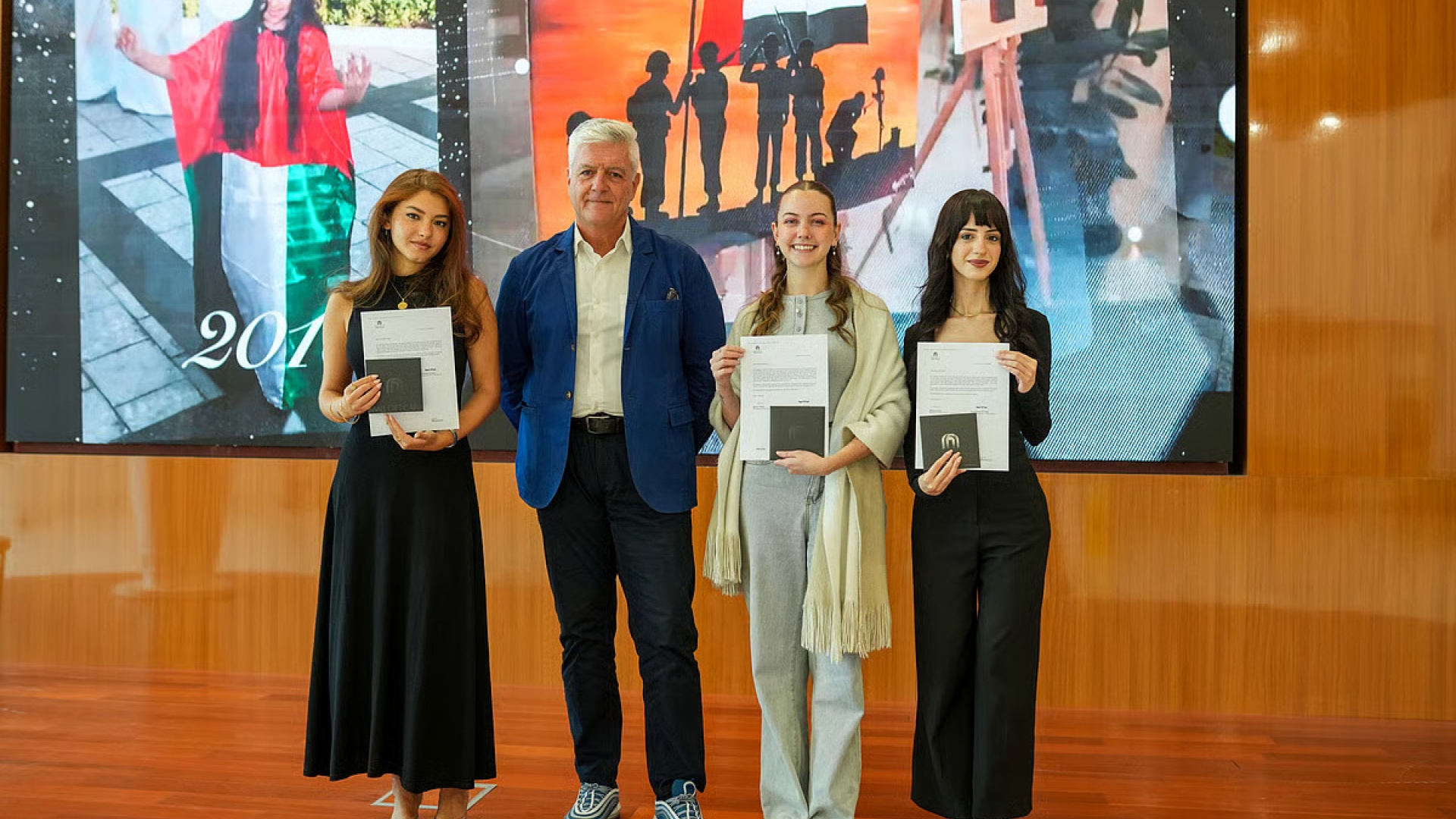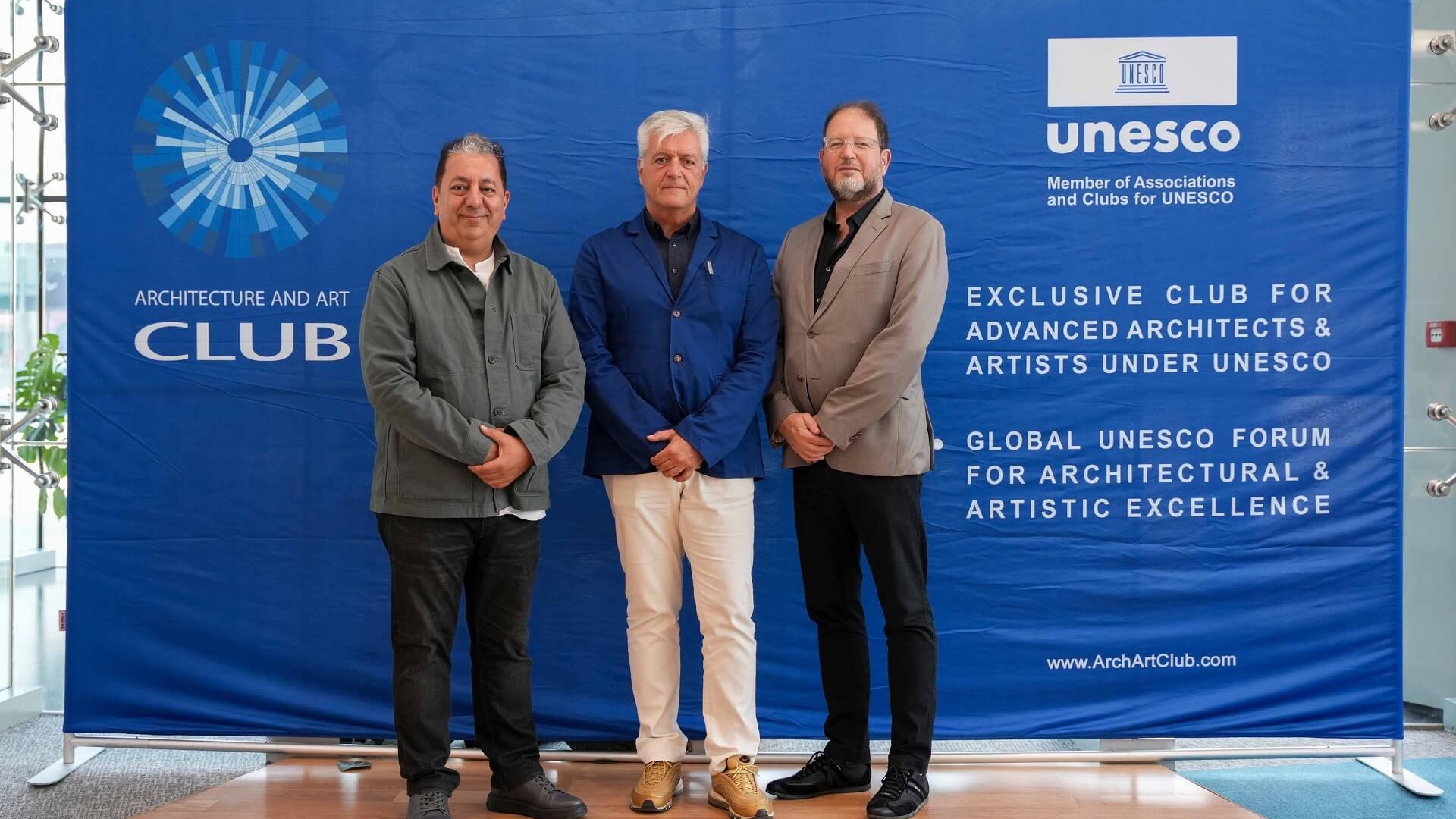Welcome to the School of Architecture and Interior Design
At CUD we provide our students with the highest quality education today, to prepare them to become leaders of tomorrow, and our Architecture and Interior Design bachelor’s degree programs are no different.
The studio experience, central to our teaching model, challenges students to translate the classroom experience into practice through innovative design and entrepreneurial attitudes. Students are encouraged to critically analyse situations and develop unique design solutions, while acknowledging the human relationship to land and design, with empathy and responsibility.
To add to the strength of the learning experience, our diverse student body includes nationalities from all over the world, bringing unique global perspectives to the classroom. Keeping in view the fast-paced evolution of architecture, interior design and sustainability, CUD strives to provide students with the knowledge and tools to enable them to become change makers within the industry.
Our Bachelor of Architecture (BArch) and the Bachelor of Science in Interior Design (BScID) programs are benchmarked against Canadian and American standards and offer opportunities to transfer or undertake a period of study in North America.
We offer a transdisciplinary curriculum with the formative years being shared across both undergraduate programs, allowing for a shared approach to design thinking and problem solving. You will experience the latest design technology, learning from an international faculty with decades of teaching and industry experience, in a fun, enriching, and future facing university environment.
Throughout each of the programs you will develop the fundamental skills and technical knowledge required for professional practice or further study in the field. You will gain a thorough understanding of the global traditions of architecture, interior design and art, together with the principles of human behavior and design theories. Alongside this, you will explore the professional, managerial, financial, innovative, entrepreneurial, and ethical aspects of the design industry, and gain valuable work experience through internships and real-world projects.
Our location in Dubai
Dubai is a city at the forefront of design innovation and CUD is located in the heart of the downtown district, less than a mile away from outstanding architectural feats such as the world-famous Burj Khalifa and the Dubai Design District D3. Dubai is also renowned for its ever evolving skyline and landscape which showcases several world famous and futuristic architectural and design feats.
The School of Architecture and Interior Design takes advantage of this by providing our students with real-world experiences through the industry experts we invite into our classrooms. Our programs are centered on contemporary, challenging and creative projects, rooted in a historical, theoretical and local context, and our strong industry links mean that our graduates enjoy excellent employment opportunities both locally and internationally.
To adhere to the changing trends and growing demands of the industry, CUD now offers a 4-year Bachelor of Science in Architectural Studies (BSc Arch) a program with two concentrations: Building Information Modelling and Sustainability. In the near future, the Faculty also plans to offer a Master of Science (MSc) in Architecture.
You can rest assured that when you graduate you will be well equipped to work and succeed in the profession, and make your impact on the environment around you.
Departments
 Discover
Discover Discover
Discover
Our past, present and future
The School of Architecture and Interior Design at Canadian University Dubai was founded in the year 2008. Since then, it has offered an environment in which Canadian values of higher education meet creativity, while drawing on the local culture and UAE academic higher education regulations.
The Department offers a transdisciplinary learning environment, intertwining sciences, humanities, and arts to build a graduate profile that is responsive to the contemporary architectural thinking and professional practice.
CUD is transitioning from a teaching university to a research and innovation-oriented university, and the School of Architecture and Interior Design is meeting this challenge with confidence and enthusiasm. Our new study plan is strategically framed by the creation of new knowledge through research, and targeting the generation of value for the new knowledge-based ideas we produce with our students. The recently founded CUD Incubator is assisting the process of these ideas and giving them an additional entrepreneurial perspective.
Our students’ profile
Our program is targeted at students who have the desire and will to improve the world by improving the places they live in. Those who are curious and prepared to use their imagination to create new forms of accommodation, those who are eager to investigate, experiment, try, test, reconsider and research to help create novel and innovative solutions. Our task is to guide them in this fantastic experience of creatively investigating the world of design, while exploring their inner world.
Careers for today and tomorrow
We live in a fast-changing world, and the future architects and interior designers we are educating today will be at the peak of their careers several years later, when the market can be entirely different. We do not offer an education exclusively addressing what an architect or interior designer is and does today, instead we offer a sustainable educational strategy to assure a career profile that is responsive, agile and adaptive to the changes in the industry. The education we offer is primarily focused on learning how values and principles can be innovatively used in built forms.
Attributes of a CUD graduate from the School of Architecture and Interior Design:
- A professional, sensitive to the human culture, thoughtful to the environment, a creative thinker and an efficient entrepreneur.
- Able to adapt to changes and to diverse conditions and familiar with both traditional and contemporary design and digital fabrication and construction methods.
- Capable of revising existing concepts and inventing new ones, relevant to societal and cultural needs as well as challenges such as sustainability and climate change.
- Able to consider and compose the different polarities such as digital/analogue, natural/artificial, local/global, cultural/scientific, objective/subjective.
- Creative thinker, motivated by innovation, novelty and contemporary practices.
- Exhibits interpersonal and communication skills needed to work on projects with clients and industrial partners.
Our teaching methods
To ensure the desired graduate profile, we have developed a student-centered teaching approach to architectural design. This approach is not only focused on the transmission of teacher’s knowledge to the student, but also on the teacher’s understanding of a student’s personality to encourage organic and creative thinking. For the School of Architecture and Interior Design, the teaching of design is not just the transfer of information but an active engagement with students to draw out a creative amalgamation of ideas, values, knowledge, and desires.
Our student life
The School of Architecture and Interior Design is like a second home, given the hours our students spend at university for academic and project purposes. CUD also offers various events and activities like sports, festivals, music, and dance performances, movies, cultural celebrations, competitions, visits to art galleries, museums, conferences and historical sites. Architecture and Interior Design students can use the University’s computer and construction labs and a well-organized library workspace to work on their projects. Students collaborate extensively with students from other faculties and often make friends for life.
Our study plans
To achieve its mission, the School of Architecture and Interior Design organizes its study plan around five main interconnected pillars reflecting the profile of architects and designers:
To think, to create, to make, to represent, to respect.
To ‘think’
It covers all academic content concerning the theories and history of architecture and interior design. The considerations of construction and materials, and the impact of the natural, cultural, financial and technical environments on design thinking and practice. The development of creative and speculative thinking, curiosity, imagination, cross-disciplinarity and research are the core targets of this pillar.
To ‘create’
It covers design studios which follow a graduate progression from the simple to the complex and from the small to the large scale. They are designed to incorporate aspects of all other pillars and to test and experiment with ways those pillars can be integrated. Experimentation and encouragement of new formal and functional explorations, familiarization with risk-taking, and introduction to speculation on which design could develop are the core targets of this pillar.
To ‘represent’
It elaborates techniques, tools and methods of presenting design proposals and representing values, feelings, and emotions. The familiarization with tools in finding, experimenting, representing and encouraging the synergy between human and non-human action in architectural design are the main targets of this pillar.
To ‘make’
It focuses on the making process by offering students insights and construction techniques into different building materials and techniques. It is presented in autonomous courses and into parts of the studio work. The impact of advanced technologies in construction, new materials, and cross-disciplinary collaboration of the contemporary building industry framework in this part of the study plan.
To ‘respect’
It introduces students to the impact of climate and environment on human life, the development of culture and the consequences of climate change on our future. The Faculty cultivates respect of natural and cultural environments and provides different techniques to implement the values in practice. The stabilization of the delicate equilibrium between the planet and society is a condition of our existence as humans, and innovation enables the reconsideration of established design attitudes and practices.








